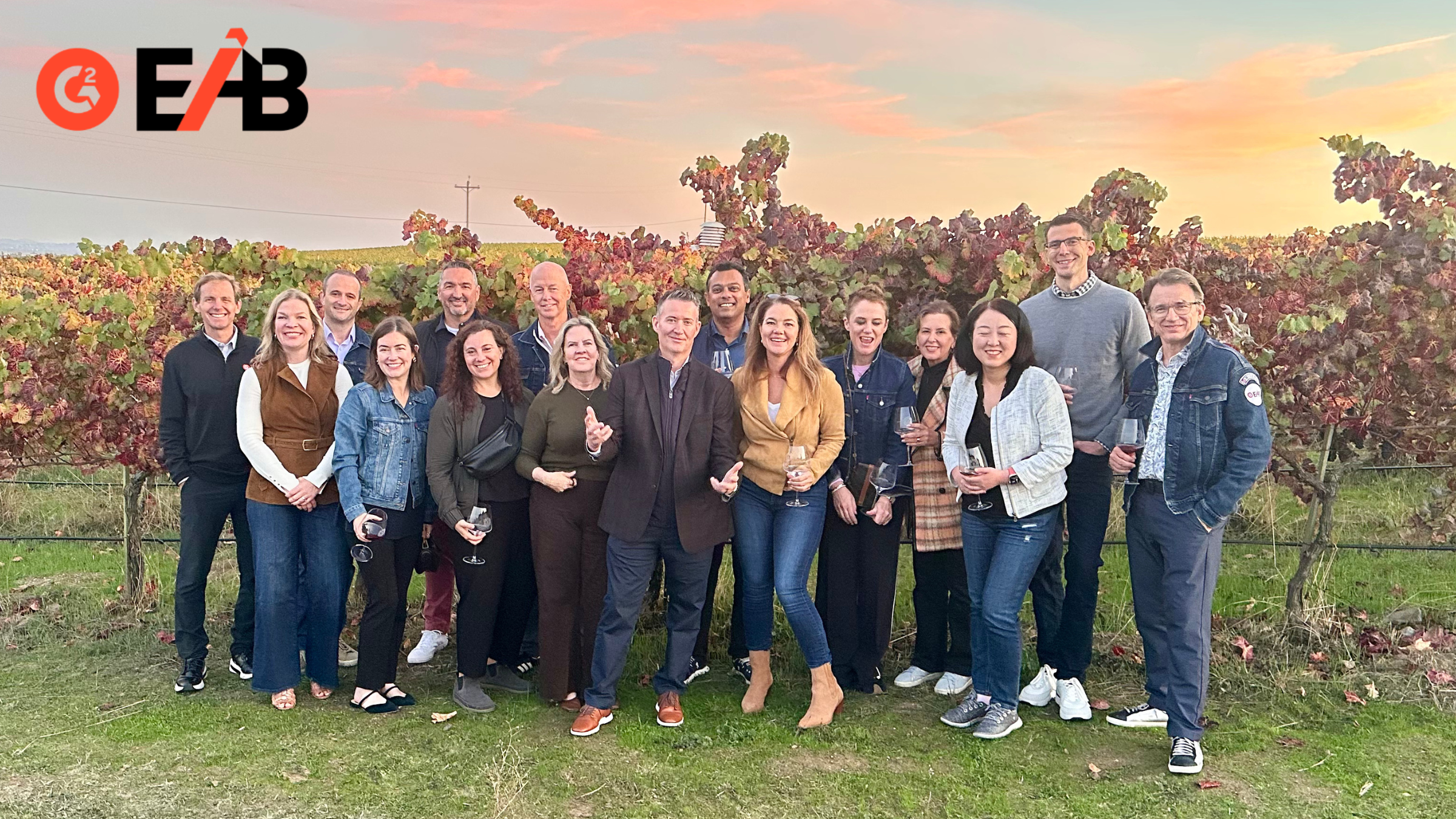October 30, 2025
 by Sydney Sloan / October 30, 2025
by Sydney Sloan / October 30, 2025

As the pace of innovation accelerates, go-to-market (GTM) leaders are rewriting their playbooks at stunning speed. During G2’s latest meeting with our Executive Advisory Board (EAB), we had the opportunity to discuss how we’re going about it.
We covered the trends we’re seeing, challenges we’re facing, and the approaches and innovations that will fuel our growth. Our conversation revealed that the next generation of GTM success will come from combining Agentic-powered process automation with high-quality data and human-powered, customer-centric engagement.
Here are five core topics we covered that are priorities for our group, and should be for other leaders as well.
AI agents are no longer experimental—they’re becoming the backbone of modern operations across the company. According to recent G2 research, nearly 60% of companies have already adopted AI agents, and a growing number have dedicated multimillion-dollar budgets to scale them.
These agents are evolving beyond automation to AI orchestration—systems of agents that can plan, act, and adapt across workflows. They’re redefining what productivity means, delivering compounding efficiency gains without human slowdown. For B2B companies, that means not just faster execution but measurable gains in speed-to-market, customer engagement, and operational velocity. We will see ourselves orchestrate agents, transitioning from “humans in the loop” to ensure the outputs are correct, to “humans in the lead”, managing agents and their workflows to produce work at an unprecedented pace.
For GTM leaders, the takeaway is simple: the competitive edge isn’t in adopting AI first—it’s in operationalizing it best. Teams that redesign their processes and agentic systems into sales, marketing, and customer experience are already setting new benchmarks for efficiency and innovation.
Trust has become the single most valuable currency in the age of AI. While adoption is rising, many organizations still limit autonomy for their AI tools because of concerns over accuracy, transparency, and brand safety.
This “trust gap” (as described by G2 Chief Innovation Officer Tim Sanders) is creating a new market dynamic: the emergence of agent guardrail management solutions — platforms that monitor, evaluate, and certify AI agents. These services help enterprises manage risk and performance, giving leaders the confidence to deploy AI at scale.
For SaaS CMOs and product leaders, the message is clear: transparency builds trust, and trust drives adoption. The brands that show customers and employees exactly how AI improves reliability, fairness, and results will earn long-term loyalty and outperform those that play it safe.
Another major theme was the convergence of product, sales, and marketing. The traditional handoff between teams is dissolving as leaders align around shared data, customer insights, and performance metrics.
One EAB member shared they are now holding weekly “bowtie meetings” that track customer journey stages from awareness through renewal. This model ensures visibility and accountability across every stage of the funnel, connecting traffic, activation, and return on investment (ROI) data in real-time.
By uniting GTM functions through shared dashboards and intent signals, B2B organizations are creating a closed-loop system where insights flow seamlessly between teams. The result is faster decision-making, smarter investments, and a seamless customer experience that feels cohesive from end to end.
Speed has become the new competitive advantage. The most effective companies are rethinking how teams are structured, shifting from traditional functional silos to cross-disciplinary pods focused on measurable outcomes.
At G2, this mindset shows up in six-week sprint cycles, continuous iteration, and a culture of experimentation. Teams are encouraged to ship fast, learn fast, and focus on delivering impact—not just features. Many organizations are also tapping into new talent pools, acquiring AI-first startups as a way to scale and bring more entrepreneurial talent into the business.
The takeaway for leaders: agility must be intentional. It’s not just about moving faster; it’s about creating an environment where innovation, iteration, and feedback compound over time.
For many, the value of adopting AI was being measured in productivity gains and cost savings. That’s changing fast. The most successful B2B companies now view AI as a growth multiplier—a force that expands capacity, accelerates learning, and enables entirely new business models.
Instead of asking how AI can reduce hours, GTM leaders are asking how it can 3x (or 10x!) productivity or cut campaign time-to-market by half. G2’s own data shows that AI agents are already driving measurable gains in customer engagement, lead velocity, and revenue influence.
The key is to measure not just efficiency but velocity and workforce multiples. These metrics capture how AI scales across the organization. When teams focus on these, they stop seeing AI as a replacement for human effort and start seeing it as an amplifier for human creativity.
Reflecting on these trends and takeaways from our EAB conversations, it has become evident that we’re living in a time of major disruption, where transformation is required. At G2, we see this transformation every day among our customers and within our own teams. The companies leading this shift aren’t waiting for certainty; they’re learning in motion.
And as AI continues to reshape how we work, buy, and grow, one thing is clear: the future of go-to-market is already here—it’s intelligent, integrated, and infinitely scalable. GTM excellence won’t come from choosing the right tool, but from cultivating the right mindset that values speed over perfection, collaboration over silos, and trust over control.
Want to keep up with the pace of AI? Here are a few resources:
And I’d like to extend a sincere thank you to all EAB members who attended our 2025 offsite meeting and shared valuable insights to guide our strategy at G2, while all learning together.
Sydney Sloan is a visionary marketing leader with a track record of driving growth and innovation in the tech industry. As CMO Advistor to G2, the world’s largest and most trusted software marketplace, Sydney is at the forefront of shaping the company's strategic direction. Sydney previously held CMO roles at compliance automation software company Drata, sales tech leader Salesloft, and cloud content management visionary Alfresco.
In a sea of stakeholders, pick the customer.
.jpg) by Aayushi Sanghavi
by Aayushi Sanghavi
As a business powered by customer voice, we embrace any opportunity to capture feedback from...
 by Godard Abel
by Godard Abel
At G2, our Executive Advisory Board (EAB) plays a crucial role in shaping our go-to-market...
 by Sydney Sloan
by Sydney Sloan
In a sea of stakeholders, pick the customer.
.jpg) by Aayushi Sanghavi
by Aayushi Sanghavi
As a business powered by customer voice, we embrace any opportunity to capture feedback from...
 by Godard Abel
by Godard Abel


